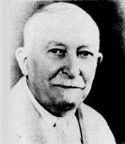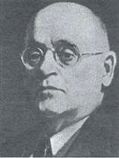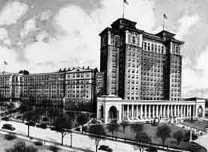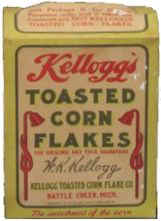|
|
|
 |
|
Drs. John & William KelloggBattle of the Bow(e)ls | |
|
One brother wanted to fill your bowl, the other wanted to empty your bowel. Most people think of bowls not bowels when they think of
Kellogg's - think again. Those GREAT sugar-frosted corn flakes you eat
every morning were not what the good Dr. Kellogg had in mind, but his
younger, more entrepreneurial brother had a better idea. |
 John Kellogg
|
John was not interested in riches, his focus was on the sharing his health reform ideas with his colleagues and the public. He did not accept a salary for his work at the Sanitarium and instead derived his income from royalties on the numerous books and treatises he published in his lifetime. His "rejuvenation" clinic was an elegant hotel, hospital, and spa in one and attracted wealthy health seekers. Dr. John had lots of good ideas including the benefits of a healthy diet, exercise, fresh air, and rest. He was ahead of his time in suggesting the link between smoking and lung cancer. But he also had some pretty drastic ideas - like extolling the benefits of excessive chewing of food and opposing any sexual activity - as well as practicing some quack cures involving various treatments with extremely cold water, electric shocks, and mechanical manipulation. But nothing fascinated him as much as his obsession with the bowel. He believed that ninety percent of all illnesses could be traced to unclean bowels, and his views became, for a time, a national obsession. He emphasized a regimen that would promote colon cleansing and regularity (and we don't mean being on time for spa classes). It was his attempts to provide his clients with a palatable and healthful vegetarian diet that leads to the next chapter in our story.
Meanwhile, business at the Sanitarium was booming and by 1888 had been expanded to add a medical college and to accommodate up to 700 patients. (After a fire in 1902, it was rebuilt to accommodate 1,000 guests annually attended by an even larger staff.) Inspired by this success, the good doctor created another hit--wheat flakes. Again, he "borrowed" someone else's idea. A Denver man had created a product he called Shredded Wheat, little square wheat biscuits. The good doctor's innovation was the flaking and toasting process. For now, the corn flakes are still a twinkle in the good doctor's eye but not far off. Meanwhile, he gave his younger brother William a job as the clinic's accountant. Unfortunately, as is so frequently the case with siblings, they did not always see eye to eye. By this time, Battle Creek had transformed into cereal central and new manufacturers were appearing overnight to cash in on the new breakfast fad. Although, competitors were jumping into the cereal market left and right, Dr. John was only interested in the sanitarium and his medical theories. Although he was fascinated with the health aspects of whole-grain foods, he was more interested in playing with it than selling it. Will, on the other hand, was interested in making some money. Will was particularly annoyed when the corn flake followed the wheat flake and his brother John wanted to name the product Sanitas. Will thought this sounded a little too sterile and unappealing. When his brother took a business trip, Will boldly added some sweeteners to the corn flakes. We don't know what inspired this treasonous behavior, but we imagine he was pretty fed up with the whole health regimen of the clinic and his brother's fuddy duddy ways.
|
|





